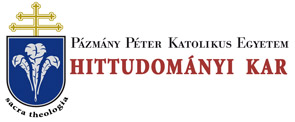Folia Theologica et Canonica 10. 32/24 (2021)
Ius canonicum
120 ALBERTO SORIA JIMÉNEZ, OSB deserved a much more rigorous handling than it received from some, especially in ecclesiastical circles which did not stand out for their humble acceptance of the actions of papal authority (c. 331 CIC) when exercising his munus docendi (c. 375 CIC). Nowadays one can consider that the perplexity aroused by the initial postconciliar decisions on liturgy has seemingly, almost been overcome. The cause of this, to a great extent, can be found in the actions of the later Archbishop Annibale Bugnini (1912-1982), whose manner of action surprised Louis Bouyer (1913-2004), who raised an eloquent report on the same, being as he was a first-hand eyewitness.5 Maybe worst of all is that now it is possible to see how, with regard to this matter, some seemed to act at that time, as if they were the “owners” of the sacred, and as if they were allowed to do and undo at will, despite how far removed this was from their status as “administrators of the mysteries”, as Lumen gentium had already taught us. The undeniable truth is that, based on those attitudes, in total opposition to Canon Law, some insisted on imposing changes at all costs, according to their own interests, sometimes even scorning the past as something obsolete, or even negative, as if no one were allowed to manifest their objection to the “power” of their decisions. This was, in all truth, the ecclesiastical context of the initial decisions that came out of the Sacred Congregation of Rites and also from the Sacred Congregation for Divine Worship, including the Instruction on the Progressive Application of the Apostolic Constitution by St. Paul VI, Missale Romanum, dated October 20th 1969.6 According to the opinion of more than just a few people, there was no reason to make any other objections to the celebration of Holy Mass according to the new liturgical books, apart from the exception authorised by indult or dispensation. 5 See Bouyer, L., La décomposition du catholicisme, Paris 1968, very soon translated into Spanish by Lator Ros, A. E. under the title: La descomposición del catolicismo (Barcelona 1970). This translation has recently been reprinted in 2015 (Buenos Aires), preceded by a study by Peretó Rivas, R. (Semblanza de Louis Bouyer). Cf. also the information that Bouyer, L. contributes in his Memoirs (Paris 2014), or its English version The Memoirs of Louis Bouyer: From Youth and Conversion to Vatican II, the Liturgical Reform and After, Kettering, Ohio 2015. The notes by Cardinal Antonelli (1896-1993) on the meetings of the Consilium ad exsequendam Constitutionem de Sacra Liturgia (1964-1969), published by Giampietro, N. {El cardenal Ferdinando Antonelli y la reforma litúrgica, Madrid 2005), are also very significant. Similarly, Cardinal Congar (1904-1995) expressed his astonishment at this situation in También el Papa obedece (entrevista de S. M. PACI), in 30 dlas 7 (1993) 24: “I do not understand either why the safeguarding of the Mass, which I myself have celebrated for over thirty years, was not authorized. I understand the protests over this matter. I confess that I spoke about this matter several times with the Archbishop of Paris and with the Vatican via Jean Guitton, the philosopher and confidant of Paul VI. I repeatedly requested that both rites be allowed to exist together. Unfortunately, I did not achieve it.” 6 Cf. SC. pro Sacramentis et Cultu Divino, Inst. De Constitutione Apostolica “Missale Romanum" (20 oct. 1969): AAS 61 (1969)749-753.
